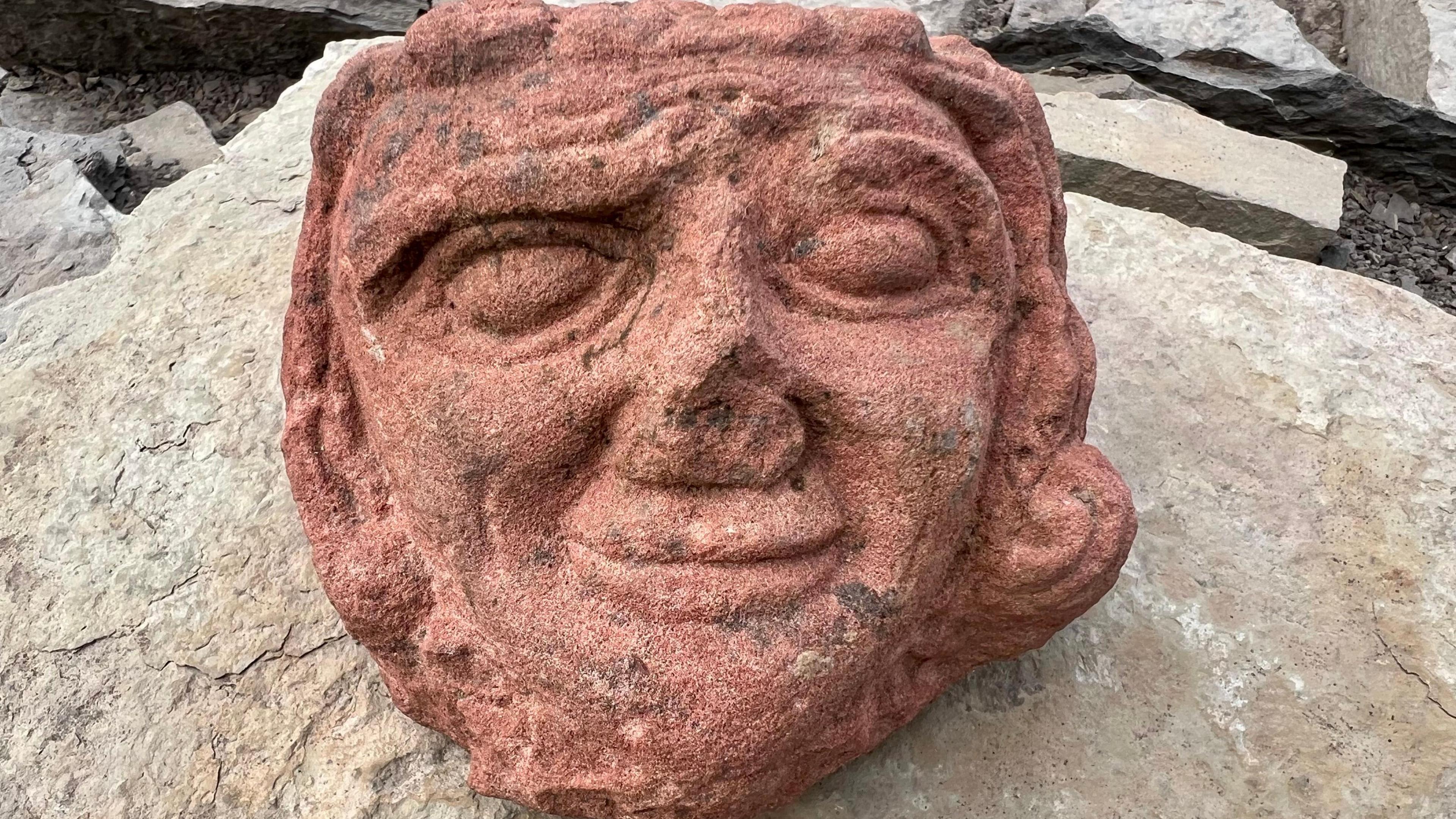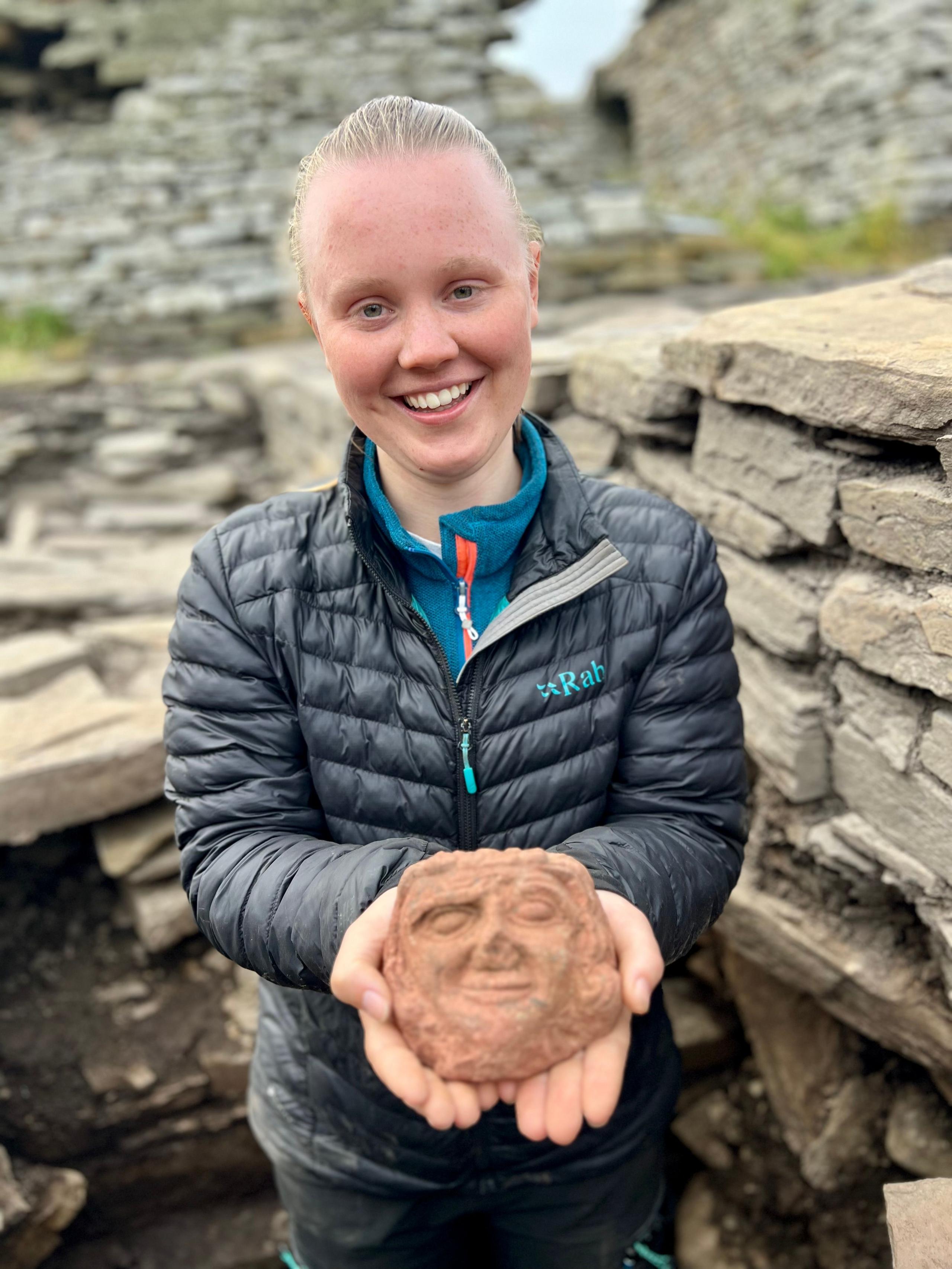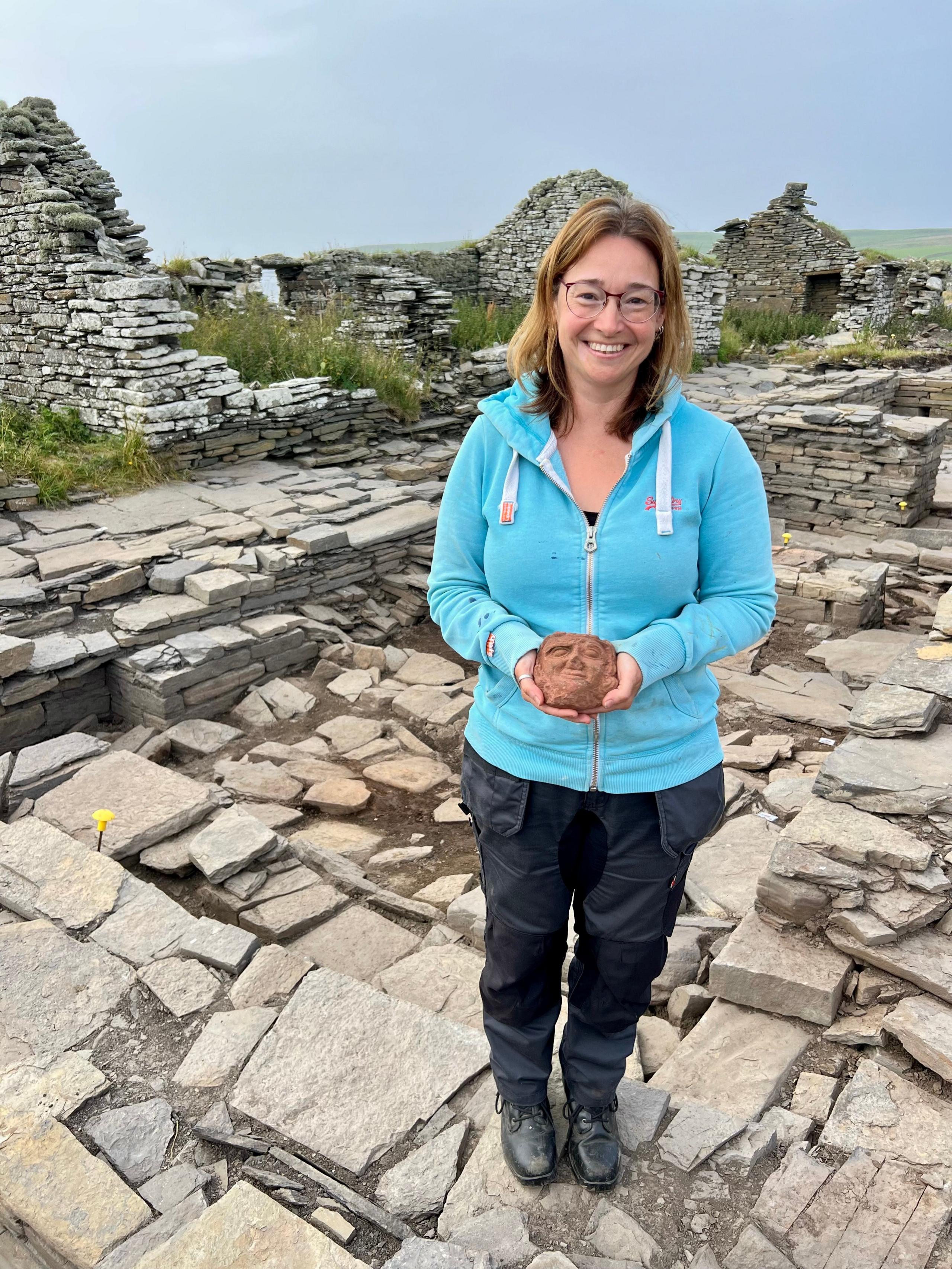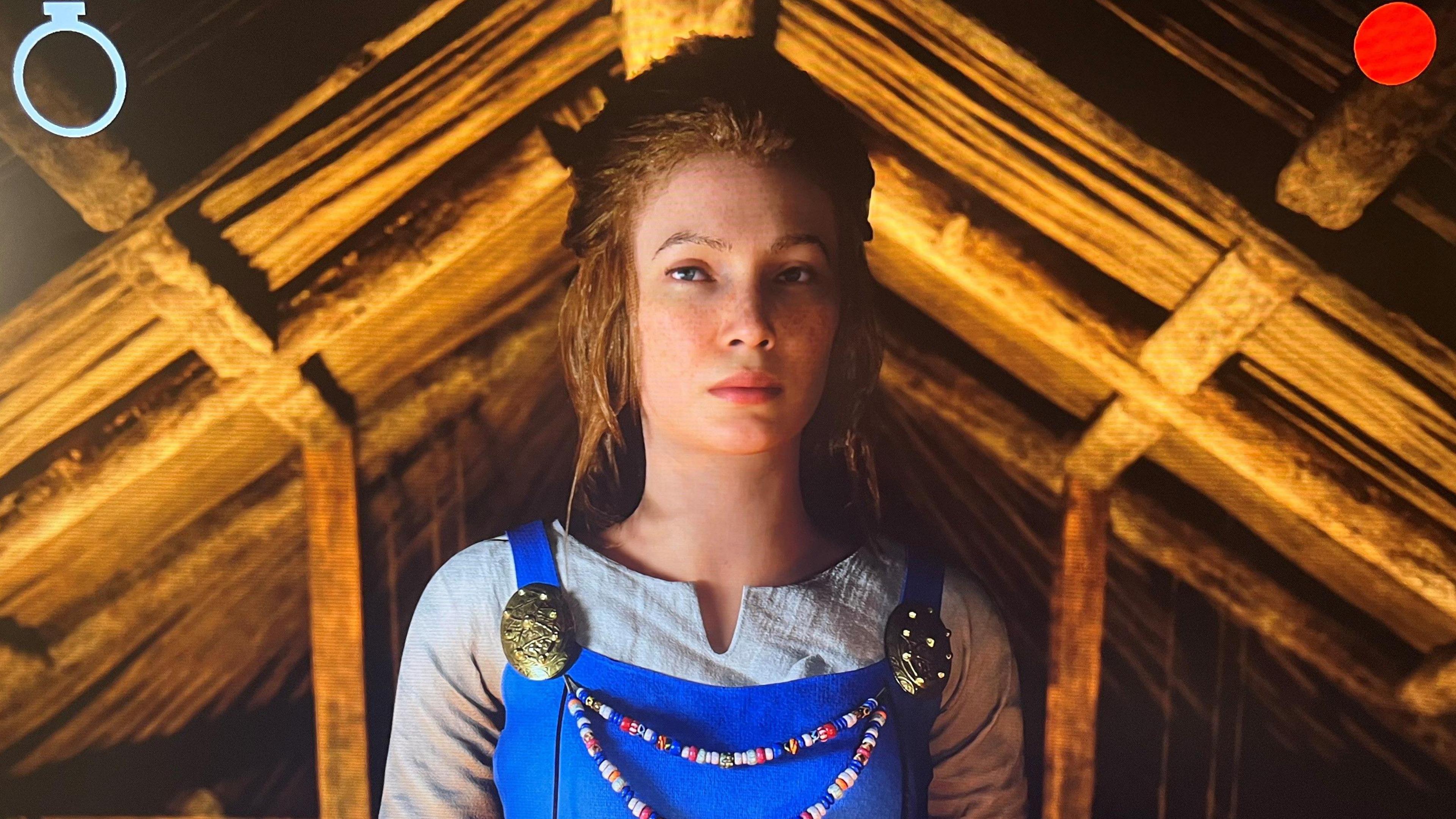Carved stone head could be more than 900 years old

The head was discovered by an archaeology student
- Published
An intricately-carved sandstone head which could be more than 900 years old has been found on the Orkney island of Rousay.
The head was discovered by University of the Highlands and Islands (UHI) archaeology student Katie Joss at the Skaill Farm dig.
She was exploring the foundations of a large wall when the head popped out into her hands.
"It was quite a shock, we were removing a slab when the head came rolling out at us and as we turned it around we saw a face looking back at us. It was really exciting," she said.

Katie Joss said it was "quite a shock" to make the discovery
Dr Sarah Jane Gibbon from the UHI Archaeology Institute is co-director of the dig at Skaill Farm, which is now in its 10th year.
She said she was surprised at the intricacy of the carved face and hair, which looks serene despite its nose being broken off.
"It looks very similar to a carved head in the south aisle of St Magnus cathedral," she said.
She added that the style of it suggested it might have had a similar function in a 12th Century building.
"It's really unusual, we've found nothing like this here at Skaill before," she said.
"We don't know how the head ended up in the backfill of this building, though the fact the nose is broken could be a clue."

Dr Sarah Jane Gibbon said she was surprised at the intricacy of the carved face
The head - which has not been given a name yet - is being preserved with the other finds from the dig.
It will be cleaned up and put on public display at some point in the future.
The name of Skaill farm comes from from the Old Norse word "skáli", meaning "hall".
The Skaill excavation site sits directly on top of what was once the Norse settlement of powerful 12th Century Viking chieftain, Sigurd of Westness.
Dan Lee, an archaeologist with the UHI Archaeology Institute, said: "Sigurd was pals with Earl Rognvald, who built St Magnus cathedral in Kirkwall.
"We think we are standing on the hall that Sigurd built and lived in, which then became a late-medieval farmstead.
"Right next door we have the remains of St Mary's chapel and a medieval tower called The Wirk.
"We think this was a real seat of power in that period."
Related topics
- Published8 May
